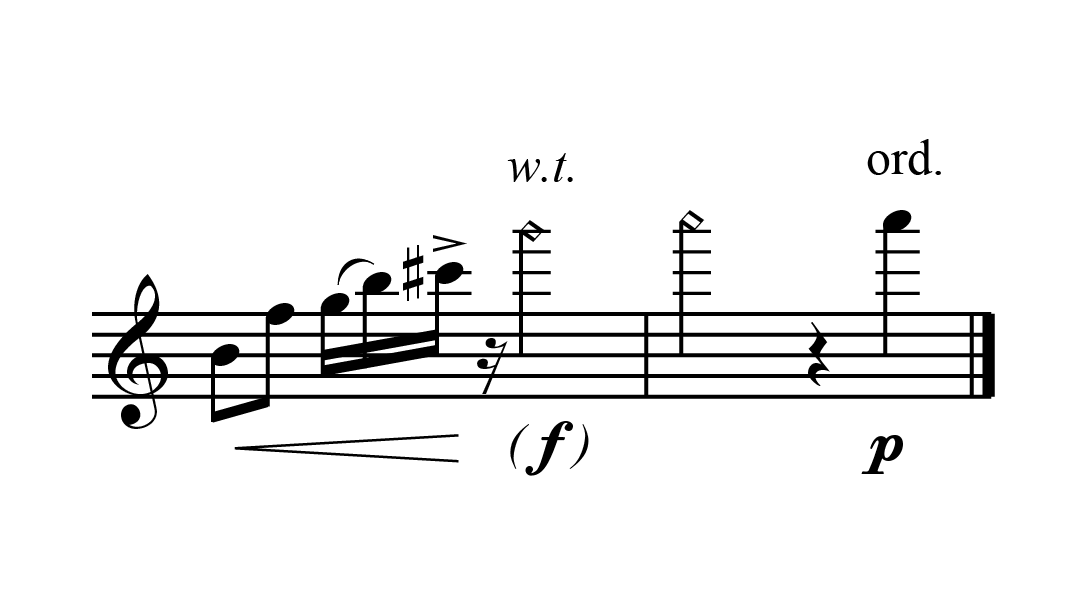Whistle tones
Whistle tones (sometimes also called whisper tones) are created by a very slow stream of air breaking over the far edge of the embouchure hole. These notes are high pitched and very quiet. They are naturally unstable, and the shape of the inside of the player’s mouth determines which of the many notes available from each fingered pitch is sounded, as well as the dynamic of the sounded note. The naturally quiet dynamic of these sounds means that they may require amplification in live performance in order to be reliably heard.
Whistle tones on g'''
Pitch
A player may isolate a particular pitch or perform a range of pitches on a given fingering. Each fingering can produce multiple whistle tones based on the harmonic series according to mouth shape and air speed. A less skilled player will find it easier to fluctuate between pitches than to isolate a single note. The number of available pitches on each fingering varies according to the length of the tube used, in the same way as the flute responds to the harmonic series. The easiest pitches to produce are those of the instrument's top register, with lower pitches extremely difficult to control and project.
Response
Whistle tones can be unreliable in performance and may take time to become audible. It is advised to avoid this technique in a rhythmic context, and to allow plenty of space around the whistle tones to enable them to establish themselves.
Notation of whistle tones
Whistle tones are best shown as diamond noteheads on the required written pitch (ie with the correct transposition). It may also be useful to use the abbreviation w.t. for clarification, and to define this in a glossary.

It is difficult to control stable whistle tones, and at times fluctuating pitches may be more appropriate to the composition. These can be notated in a variety of ways, but the suggested method is shown below.
